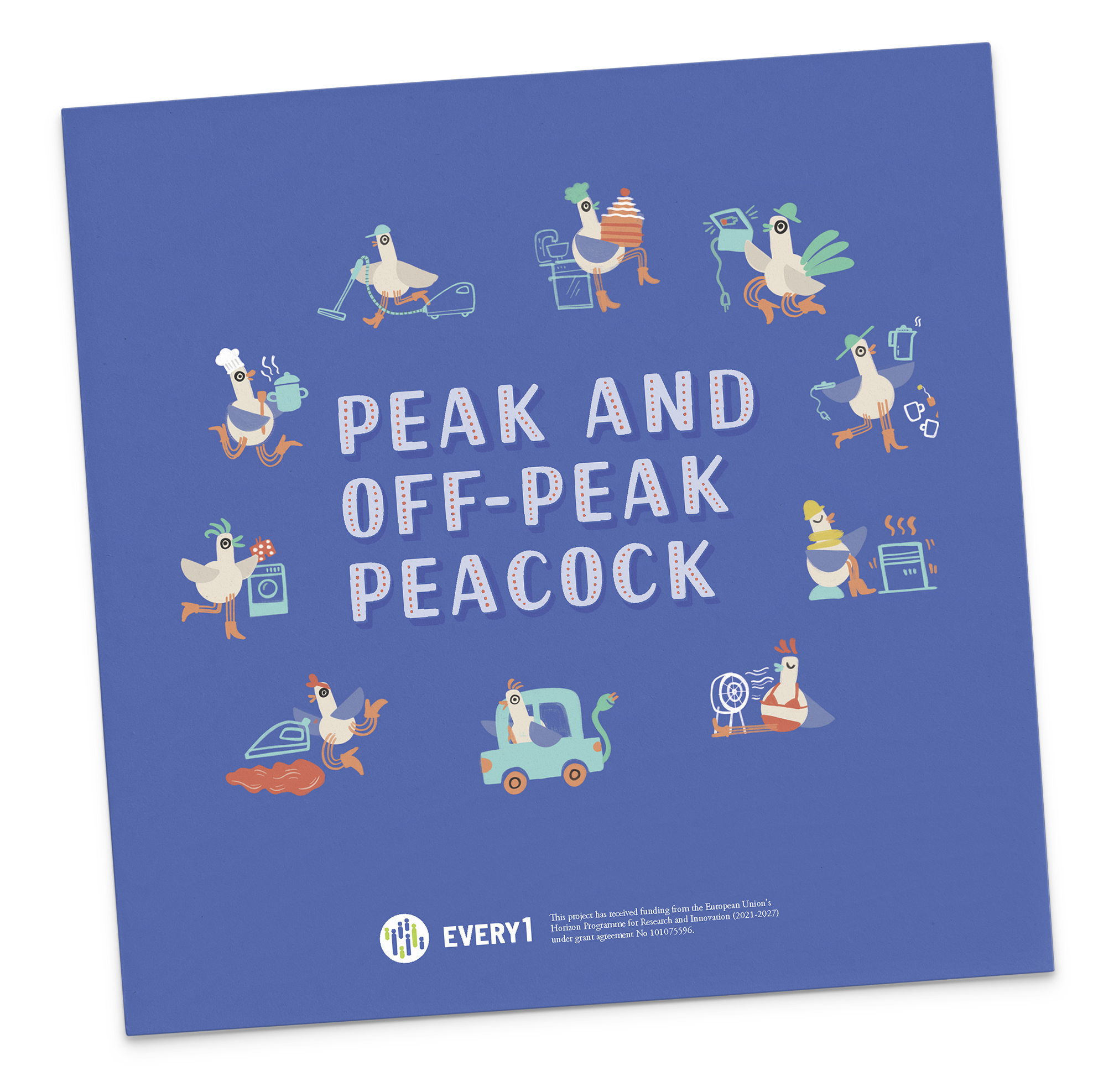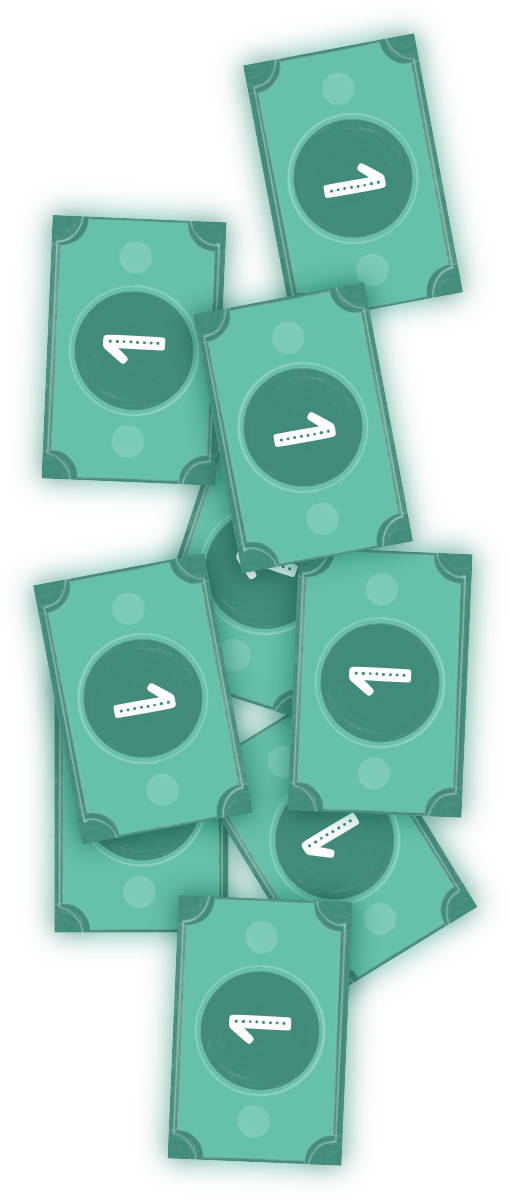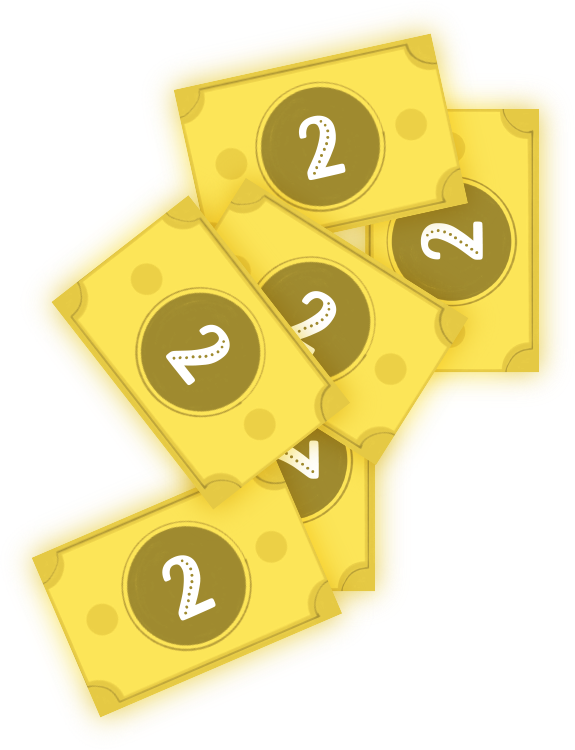Teaching about energy peaks through play
Completed: October 2024
Game design, graphic design, project management, illustration, printing, logistics, distribution.
For EVERY1 (www.every1.energy) in collaboration with: Eindhoven University of Technology and Th!nk E
Supported by: EU Horizon Europe Programme
A playful approach to energy literacy
How do you teach children to navigate the complexities of renewable energy and dynamic pricing? That question sits at the heart of EVERY1, an ambitious EU-funded project working to democratize participation in Europe's digital energy transition. The challenge: making energy management both understandable and engaging for young minds.
Through stakeholder engagement across 21 European ecosystems, the EVERY1 team identified a critical need for interactive learning tools that could bridge the gap between complex energy concepts and everyday understanding. The solution became a board game that transforms abstract ideas about electricity pricing into tangible, playful experiences.


Welcome to Peafowl Planet
My role spanned the entire creative and logistical journey. From initial game mechanics and visual identity through production management and multi-language coordination.
Working closely with experts's team at Eindhoven University of Technology, we developed a world where busy peacocks learn to time their energy-intensive activities around renewable energy availability.
The game's central metaphor emerged from real-world energy dynamics: just as concert tickets cost more when demand peaks, electricity prices fluctuate based on supply and availability. On Peafowl Planet, players discover that weekday energy costs soar when everyone's active, while weekend rates drop as demand decreases. Through this playful framework, children grasp fundamental concepts about renewable energy planning and cost optimization.
The design approach focused on:
📌 Cross-generational engagement
Creating mechanics that worked equally well for children and their teachers, fostering meaningful intergenerational dialogue about energy choices.
📌 Scalable impact
Developing materials that could be translated, adapted, and distributed across diverse European contexts while maintaining core learning objectives.
📌 Evidence-based iteration
Integrating feedback from testing sessions across Netherlands, Portugal, and Greece to refine both gameplay mechanics and visual communication.


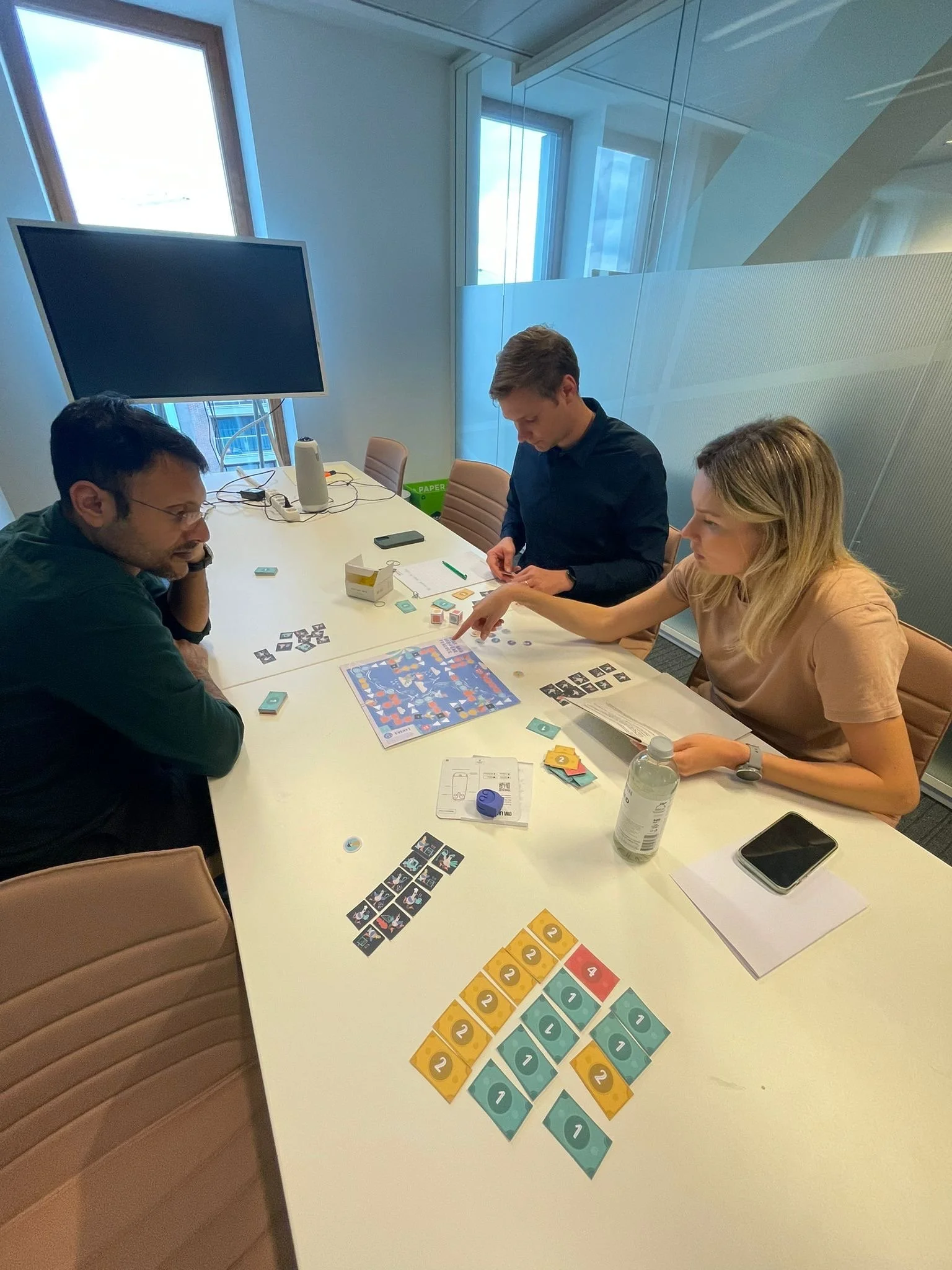
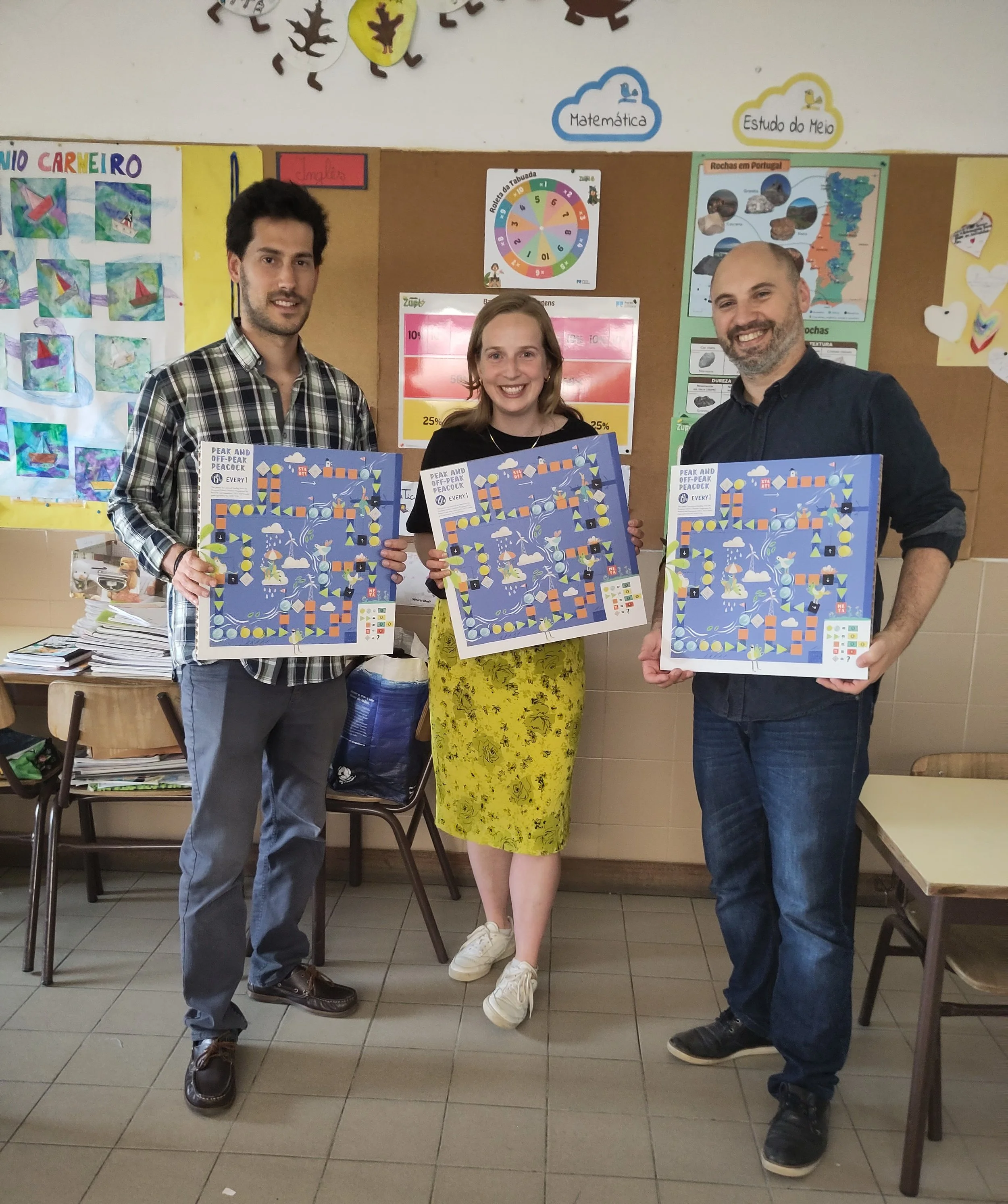
More than entertainment! This is systems thinking in action
The testing process revealed something powerful: when children engage with energy concepts through play, they don't just learn rules. They develop intuitive understanding of how individual choices connect to larger systems. Feedback from educators and young participants consistently highlighted how the game made abstract concepts tangible and memorable.
As lead designer, I managed every aspect from concept through execution. The process began with establishing core learning objectives, then evolved through iterative prototyping and user testing. Keeping in mind translation into multiple European languages required careful attention to cultural context while preserving gameplay integrity.
What struck me most was witnessing children grasping why timing matters in energy use, or seeing teachers recognize yet another way to discuss sustainability. These weren't just learning outcomes; they were shifts in how we think about our relationship with energy systems.
The project reinforced my belief that design's greatest power lies in making complex systems accessible and actionable. Energy transition isn't just a technical challenge—it's a communication challenge. Through thoughtful game design, we created a space where learning happens naturally, where abstract concepts become concrete strategies, and where the next generation develops the systems thinking they'll need to navigate an evolving energy landscape.
This work reminded me that being a designer means being a translator—taking the essential and making it engaging, taking the complex and making it clear, taking the future and making it playable.


